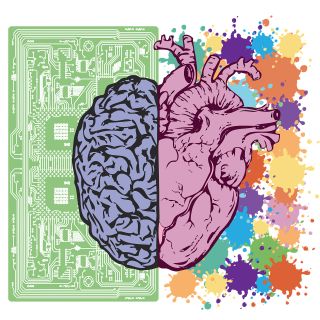Emotional Intelligence
It’s Not Enough to Feel Your Feelings
Three steps to increase your emotional intelligence.
Posted July 2, 2024 Reviewed by Ray Parker
Key points
- Emotions are bodily signals, like pain or hunger, alerting you to what's important in your life.
- Emotional responses are directly linked to values.
- Decoding emotions and identifying the values they're pointing towards provides guidance.
- Taking steps towards living those values increases your sense of balance and well-being.
“You just need to feel your feelings.” We hear it all the time, but what does that mean? And even if you successfully “feel your feelings,” then what? Is that enough?
Emotions as a Signal
The way we speak about emotions has evolved over time. Fortunately, we seem to have agreed that unwanted emotions are no longer the enemy and that pushing them out is futile and causes suffering. The prevailing viewpoint on emotions now seems to be that they are something to name, accept, and observe. This is progress, but it does not address the reason the unwanted emotion is present in the first place.
Combining acceptance and commitment therapy (ACT) principles with evolutionary psychology offers insight into our emotions. Emotions evolved for a reason. Consider our basic needs: escaping danger, creating bonds, or finding a mate. Our emotions help us respond to our environment to pass on our genes. They signal danger, trust, or the need to protect. Like hunger or pain, emotions are bodily signals alerting us to aspects of our well-being that need attention. Emotions are, therefore, adaptive tools that we can use to help us live more fulfilling lives—not just feelings to observe.
The Role of Values
But what are our emotions signaling? Emotions tell us what is important—what we value. After all, if you don’t feel emotional about something, you probably don’t value it; if you don’t value something, it won’t elicit strong emotions.
Unpleasant emotions alert us to values needing attention, nourishment, and healing—while pleasant emotions signal value fulfillment. We may feel sad when we lose something we value, frustrated when something valuable is out of reach, jealous if someone fulfills a value we hold, regretful if we act against our values, or happy when we are engaged in a valuable activity.
However, what we value can be difficult to identify. Our lives, circumstances, and upbringings affect our value systems and may even change over time. Achievement might give way to family as we age, for example. This is where our emotions come in. Since emotions and values are linked, we know we are doing something valuable because of the emotional feedback. We will feel fulfillment and alignment if we are feeding a value, whereas we may feel drained and uneasy when we are not.
We need to be willing to feel our emotions as an essential starting point to take the next step: uncovering the value of the emotion. Learning to decode our unwanted emotions reframes how we think about them. They become our allies, helping us make sense of our pain. We can say, "I feel sad because I value connection," or "I am angry because I value justice," or "I am regretful because I value authenticity."
However, identifying the value alone won’t address the emotional signal. We must take a third step to find balance and mental well-being.

Responding to the Emotion
If we don’t respond to the emotional signal, we are not much better off than when we started. Telling yourself, “I feel sad because I value connection,” is like saying, “I feel hunger pains because I am hungry,” and then not eating. Insight is not enough. Like any good bodily signal, our emotions are a call to action.
Once you identify the values underlying your emotions, the next step is to nourish those values by making changes or taking steps toward living those values. If the value is health, make healthy changes; if it is achievement, work hard; if it is gratitude, find ways to give thanks. There are countless ways to nourish each of these values; you get to decide.
This sounds easier than it is. You might be tempted to respond to emotions at face value. For example, if you feel anxious in social settings, you may respond by avoiding them. However, uncovering the value underneath the anxiety may reveal your values of connection and belonging. The anxiety shows that an important value is at stake. Instead of running away, find ways to move towards your values. Maybe you start small by calling a family member or greeting a neighbor.
Or let’s say you get a job promotion. How you respond depends on your values. You might feel pride because you value achievement, or guilt because you value fairness and think the promotion is undeserved, or annoyance because you value flexibility and worry it won’t be present in the new role, or sadness because you value family time and think you will have less of it. Or maybe you have mixed emotions, reflecting multiple values since, as humans, we are multidimensional and have varying needs. Each emotion and its underlying values will prompt a different set of actions.
Remember that the emotion is simply showcasing your value, and it is up to you to decide how to fulfill those values. For example, you may worry that your partner is unfaithful. Your worry does not signal whether or not your partner is unfaithful; it simply signals that you likely value monogamy and trust. You can choose your path based on your evaluation of the facts and your circumstances. However, if your actions are rooted in your values, you will feel more balanced and fulfilled.
The Three-Step Emotional Intelligence Framework
We can break down the process into a three-step emotional intelligence framework. This framework offers a universal process for responding to all pleasant or unpleasant emotions to uncover an actionable path toward emotional well-being. While emotions and their circumstances are challenging, our value systems are varied and difficult to identify, and taking action can be daunting, the pathway itself is simple:
- Feel the emotion: Recognize and accept your emotional response.
- Identify the underlying value: Determine what value is being signaled by the emotion.
- Feed the value: Take action to address and nurture the identified value.
It can be easy to feel overwhelmed by unpleasant emotions and feel lost. However, our emotions are not trying to get in the way of us living our lives; they are trying to point the way.
When we understand that emotions are helpful bodily signals alerting us to what we find most important, we are more apt to listen. When we listen to our unwanted emotions, we can ask, “Why is this eliciting such a strong response? What important value is being neglected or violated?” And once we know the value at play, we can direct our energy towards feeding that value.
The goal is not to get rid of our unwanted emotions. That would be like turning off other adaptive bodily signals. Rather, our goal is to respond intelligently to our emotions when they arise. Doing so will help us navigate life’s challenges with greater clarity and confidence. In pursuing balance and mental well-being, we do far more than just feel our feelings.
References
Harris, R. (2008). The happiness trap: How to stop struggling and start living. Trumpeter.
Hayes, S. C., Strosahl, K. D., & Wilson, K. G. (2012). Acceptance and commitment therapy: The process and practice of mindful change (2nd ed.).
Nesse, R. M. (2019). Good reasons for bad feelings: Insights from the frontier of evolutionary psychiatry. Dutton.




